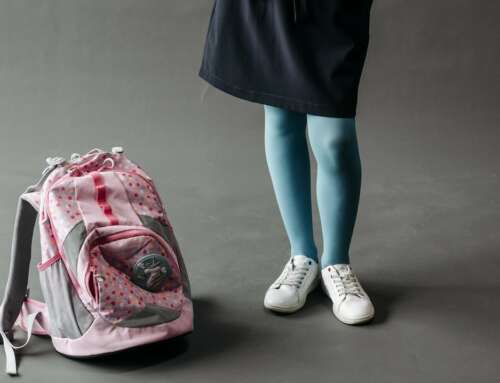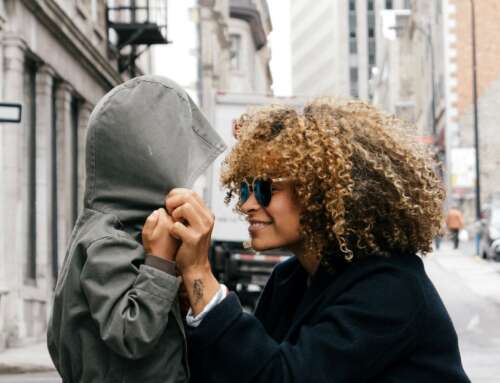Owen feels compelled to make himself tiny, standing small in the corner with his arms folded while the family watches a movie.
And he apologizes — a lot.
This summer, as the 12-year old and his little brother Craig, 10, were gathering fallen apples near their home in the Salt Lake suburb, Craig decided to count: Owen said “I’m sorry” 266 times.
Owen has battled disruptive levels of anxiety since he was 9, but it got worse this past summer. Now the possibility of hurting people or things — even apples — has been added to his already-long list of worries.
“Adolescence is a critical period for the onset of mental health disorders,” according to the latest report from New York-based Child Mind Institute, which says more than 17 million American youths have or had a serious mental health impairment before age 18. And nearly one-third of adolescents “will meet criteria” for an anxiety disorder diagnosis by age 18. So Owen’s in good company.
Alone or coexisting with other mental health conditions like depression or obsessive-compulsive behavior, which Owen started exhibiting in 2015, anxiety impacts 1 in 4 teens severely enough to be life-altering.
For a year, the Deseret News has explored how anxiety is increasingly taking a debilitating toll on teens, a research journey that drew us into families’ living rooms, doctors’ offices, therapy sessions, school programs, college quads and community meetings. We’ve talked with dozens of teens and young adults across the country, their parents and families, teachers, friends and the experts who counsel them.
We’ve shared findings about why anxiety is on the rise, what to expect with medication, how boysand girls react differently to stressors, why anxious college students flourish or falter and how anxiety interacts with faith.
Yet as we wrote about unprecedented rates of anxiety among youths, we also found reasons to be hopeful and ways to be helpful.
Helping teens overcome anxiety takes place in three distinct but overlapping arenas: At home, in schools and through community resources like churches, doctors and therapists. Each uses techniques that can be learned and shared so teens who struggle with anxiety feel heard, supported and, in time, flourish.
“I think back 20 years ago, and I was here to teach — everything else was the responsibility of the community, parents, churches,” says Larry Madden, principal of Bryant Middle School in Salt Lake City. “Really, it’s all of our jobs; it’s all of us.”
While Owen has the diagnosis, his family — dad Matt, mom Lorraine, Craig and sisters Ella, 17, and Clara, 15 — are all impacted, too. Conquering his highly anxious behavior is a family affair and each one is part cheerleader, part therapist, guiding him through what counselors call “exposure therapy,” which means doing the very thing that ratchets up his anxiety, and is one type of cognitive behavioral therapy, which is the industry’s gold standard.
The “it takes a village” approach has helped Owen. He’s been reading through workbooks at home with his mom and dad and recently completed an outpatient stint at The OCD & Anxiety Treatment Center in Bountiful. School’s structure helps, too.
Small Owen is slowly expanding, his laugh returning in unexpected bursts that delight the entire clan.
Not too long ago, Owen asked his dad if he’d always be anxious. “I think so,” Matt said. “But we’ll get better at managing it.”
At home
Anxiety doesn’t just affect a teen — it affects the entire family, from parents who aren’t sure how to react or where to get help, to siblings who may find themselves drifting out of focus as the suffering child’s needs take center stage.
Many parents feel overwhelmed by the depth of emotion and stress exploding in their home.
“I wasn’t prepared for how physically draining it is for him and for our whole family,” says Molly, a mother of three children who struggle to varying degrees with anxiety, though it’s most severe for her oldest son, Luke, 18, who also has OCD. “When Luke is anxious then everybody feels it.”
Wading through the family’s anxiety is so rough some mornings that by the time Molly gets the kids off to school in Murray, Utah by 7:15 — an epic battle — she sits down and cries. Other days, she feels calm and capable as she cares for her kids, and still has energy for yoga or book club to relieve stress.
She checks in frequently with supportive family members and friends who will listen and love, and tell her it’s OK that she’s feeling stressed, angry or anxious herself.
“Some of the mightiest work of parenting is emotional self-awareness so you can teach emotional self-regulation,” says John Duffy, a clinical psychologist near Chicago and author of “The Available Parent.”
The ability to acknowledge emotions, name them and then deal with them positively are among the most important ways parents support their anxious teens — not to mention their anxious selves.
Yet, many parents believe their role is to “always be perceivably stable,” says Jenny Howe, a therapist with practices in Utah and California. “And that does a disservice to our children. They’re watching that, and in their eyes, they think, “I have to be stable, too. This is what mom and dad do; I better do this as well.”
That doesn’t mean stable parents aren’t important, Howe says, but it means parents need to embrace the idea that it’s OK to feel emotions, it’s OK to talk about them and it’s OK to not always be OK.
When kids understand that their parents can handle tough emotions and yet be resilient, it gives them permission to do the same thing. It also breaks down the idea that “anything other than happy is unacceptable,” says Duffy.
Parents can demonstrate through direct conversations like: “Today at work I felt frustrated, so I did some deep breathing and watched a YouTube clip,” or “I felt disappointed, so I took a walk to refocus.”
Other times, it may mean apologizing to a child for mismanaged emotions or even just silently modeling healthy coping, because “kids are always watching,” Duffy says.
Shari and her three daughters have learned to embrace their emotions by meditating together.
Each morning at 6:30, they gather in the living room to read scripture, write in their journals and breathe deeply to clear their minds, which are often clouded with anxious thoughts.
The daily exercise has brought them closer and given them permission to have and express big feelings.
It’s also removed the “should” from the equation, says oldest daughter Samantha, 20, meaning there’s no expectations that they feel or not feel a certain way. Rather, meditation allows “everybody to work out their own emotions in a way that they feel is best,” she says.
It’s made a noticeable difference. They fight less, listen more.
Instead of peppering her daughters with questions about their day or homework load, Shari asks them instead, “What have you done today for self-care?”
“When we’re meditating,” says 17-year-old Nikolette, “when everyone knows we’re taking care of ourselves, it’s easier to want to take care of other people.”
At school
The ability to be mindful about emotions isn’t limited to in-home meditation.
A growing number of schools are weaving social-emotional learning and mental wellness practices into their classrooms, recognizing that next to the home, kids spend the most time at school — and they always bring their anxiety with them.
When Katy Stinchfield, a senior program manager at School-Based Health Alliance in Washington, D.C., worked with Teach for America in New Mexico early in her career, she quickly realized her high expectations needed adjustment.
“My kids (had) so much other stuff going on, they couldn’t even do math or reading,” she says. “If you want kids to be successful, you have to meet these basic needs.”
Instead of jumping into the curriculum each morning, she’d start with an informal check-in and ask the kids how they were feeling — have them name their emotions. Some kids were fine, others reported serious concerns.
– Sara Israelsen-Hartley & Lois M. Collins, Deseret News







Leave A Comment